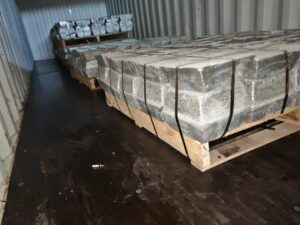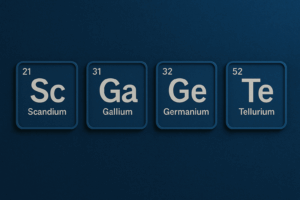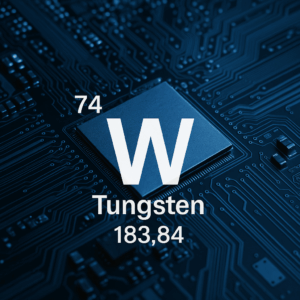When Anglo American and Teck Resources unveiled plans for a “merger of equals,” it marked the most significant shake-up in the mining sector in over a decade. Together, the two companies would form a diversified global mining giant, one of the top four copper producers in the world, and a potential catalyst for a new wave of consolidation across the industry.
But does the deal live up to its promise? Can the two deliver on the ambitious $800 million in annual cost savings they have promised shareholders? And what does this mean for the broader commodity markets?
The Strategic Rationale: Why Now
At its heart, the Anglo–Teck deal is about copper. The red metal is the lifeblood of the energy transition: electric vehicles, renewable energy, and modern grids all depend on it. With copper demand expected to rise sharply over the next decade and supply growth constrained by permitting, ESG hurdles, and capital discipline, miners are scrambling to position themselves.
- Anglo American brings a diversified portfolio: iron ore, PGMs, diamonds, and established copper operations like Collahuasi, Los Bronces, and Quellaveco.
- Teck Resources contributes a deep pipeline of copper growth projects, most notably the Quebrada Blanca (QB) expansion in Chile, alongside its legacy metallurgical coal business.
The combination creates a company with the scale, optionality, and cash-flow balance to compete with Freeport, BHP, and Codelco in copper, while diversifying risk across multiple commodities.
Portfolio Fit: Complementarity in Action
The portfolios of Anglo and Teck dovetail neatly:
- Teck strengthens Anglo’s copper exposure, particularly in Chile.
- Anglo offsets Teck’s concentration risk with diversified assets across geographies and commodities.
- The coal business, likely spun off or sold, provides optional value but doesn’t align with the ESG ambitions of the combined company.
This balance makes the merger not just an expansion play, but a portfolio optimization strategy.
Copper Power: How Big is the New Anglo–Teck
On a pro-forma basis, the merged company would produce around 1.2 million tonnes of copper annually, representing about 5.3% of global mined supply. By 2027, this could grow to 1.35 Mt, pushing its global share closer to 6%.
That makes Anglo–Teck the #4 copper producer in the world, behind Freeport-McMoRan (~1.9 Mt), BHP (~1.9 Mt), and Codelco (~1.3 Mt). It leapfrogs Southern Copper and Glencore, two long-standing copper heavyweights.
Scale matters in copper—not just for bargaining power in supply chains, but for credibility with governments, customers, and investors seeking “future-facing” exposure.
Integration Focus: QB Meets Collahuasi
The jewel in Teck’s crown, and its Achilles’ heel, is Quebrada Blanca (QB). The mine promises world-class copper output, but it has been plagued by delays, cost overruns, and a challenging ramp-up.
Anglo’s nearby Collahuasi operation provides the integration opportunity. By combining forces:
- Shared Infrastructure: water desalination, power supply, logistics, and tailings could be consolidated, cutting costs and improving sustainability.
- Operational Optimization: blending ores and coordinating mine plans could boost recoveries and reduce downtime.
- Scale Synergies: supplier negotiations and contracting power increase dramatically.
Yet challenges remain. QB’s execution issues are real, and Collahuasi’s ownership structure (with Glencore and Mitsui as partners) complicates alignment. Add in Chile’s highly engaged unions and communities, and integration will not be straightforward.
The $800 Million Question: Are Synergies Credible?
Management has set a target of $800 million in annual cost synergies. Where will it come from?
- Infrastructure integration in Chile (water, power, tailings)
- Procurement savings from bulk purchasing
- Corporate overhead consolidation
Looking at past megadeals in mining, such synergy targets are ambitious but not unprecedented. Our assessment:
- $500–600m: Realistically achievable in the medium term
- $800m: Possible, but dependent on flawless execution and regulatory approval of shared infrastructure. In particular, how well the Chilean assets are integrated will determine whether these types of cost savings can be realised.
Revenue synergies (better marketing, sequencing, and ore blending) could add another $200–300m annually, though these are harder to quantify.
Risks on the Horizon
Every mining megadeal comes with risks, and Anglo–Teck is no exception.
- Execution risk: QB ramp-up and Collahuasi integration are technically and organizationally complex.
- Regulatory risk: Chilean and Canadian authorities will scrutinize the deal; Chile, in particular, may impose conditions on jobs, taxes, and ESG.
- Commodity risk: A downturn in copper prices would challenge the entire investment case.
- Cultural risk: Merging Anglo’s global culture with Teck’s Canadian/Chilean base may prove difficult.
History tells us that mining megadeals often under-deliver. The margin of error here is small, however the merger has support from both companies’ shareholders.
Commodity Market Implications
- Copper: Consolidation is modestly bullish. It encourages capital discipline and reduces overlapping expansions, tightening supply growth at the margin.
- Iron Ore: No change. The market remains dominated by Vale, BHP, and Rio Tinto.
- Metallurgical Coal: Likely divestment could tighten seaborne supply if Glencore or another major consolidates Teck’s coal assets.
- Other commodities (Zinc, PGMs, Diamonds): Neutral to slightly supportive. Capital will flow toward copper.
Will Others Follow?
This merger will not happen in isolation. The sector is ripe for further deals:
- BHP is most likely to pursue copper acquisitions, with names like First Quantum or Lundin often mentioned.
- Rio Tinto may opt for partnerships or stakes in large projects, particularly in the Americas.
- Glencore remains the natural buyer of Teck’s coal and may seek copper growth to rebalance its portfolio.
- Mid-tiers (Hudbay, Capstone, Sandfire, Lundin) could consolidate or be taken out.
If Anglo–Teck succeeds, it could usher in a new era of copper-focused M&A.
Conclusion: A Bet on the Copper Future
The Anglo–Teck merger is, above all, a bet on copper—a belief that the energy transition will create structural deficits and that scale, integration, and discipline will matter more than ever.
The industrial logic is strong: complementary portfolios, credible cost synergies, and a clear copper growth story. The risks are significant, but so is the potential reward.
If the combined entity can stabilize QB, integrate Collahuasi, and deliver even $500–600m in cost savings, it will emerge as a top-tier copper powerhouse. Add in a divestment of coal and a copper-friendly ESG re-rating, and the upside case becomes compelling.
The bottom line: This deal could reshape not just Anglo and Teck, but the future direction of the global mining industry.





